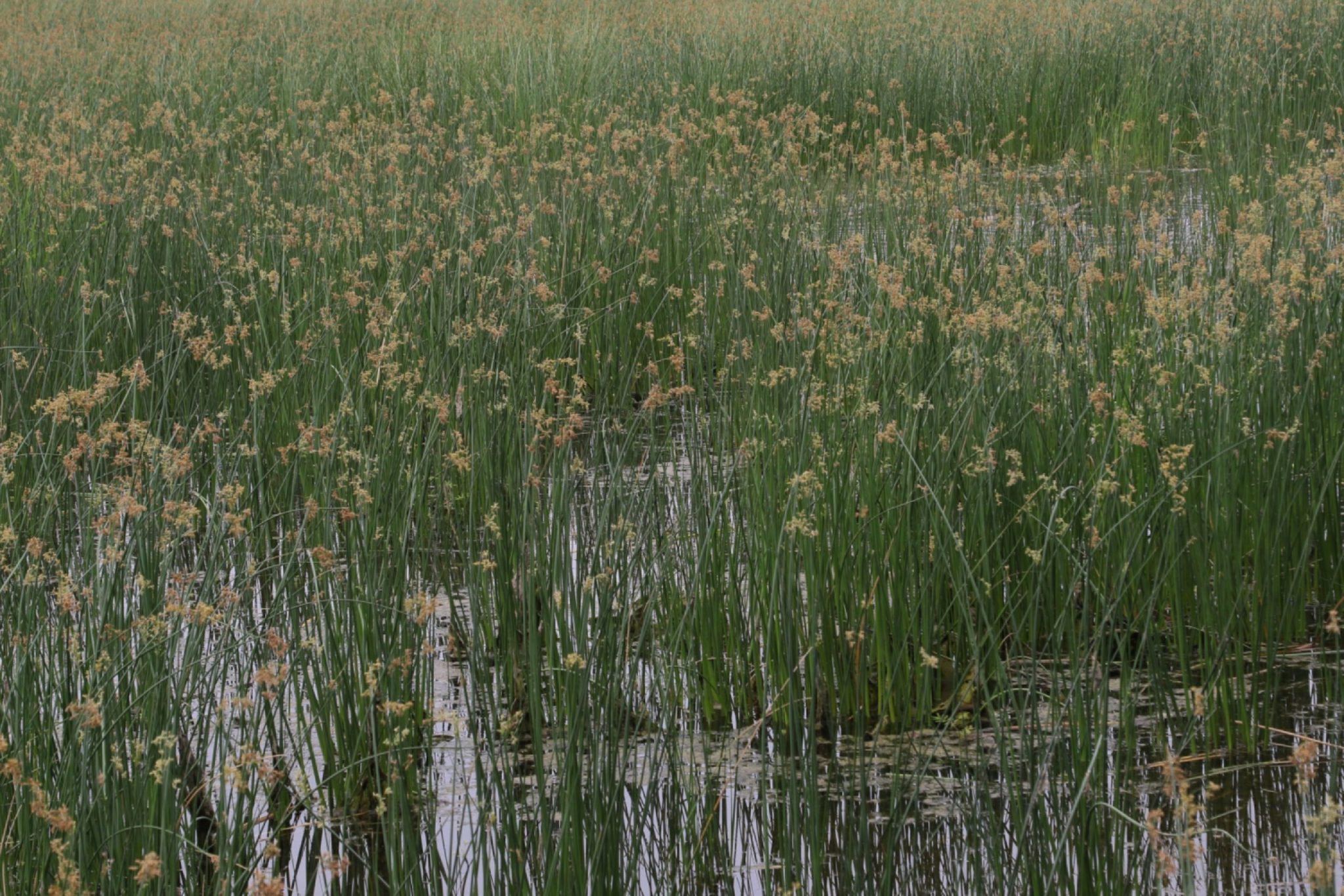Scientific Name: Scirpus
Physical Characteristics
Leaves:
- Either well-developed or blades much-reduced
- Small leaf-like bracts
Flowers:
- Variable
- Grow in clusters
- Can range from 50-500 flowers per spike
- Each has only one scale extending under to support it
- Blooms Apr – Aug
Stem:
- Typically hollow
- Thicker at base than near the flower
- Up to 6 feet
Fruit:
- One seed
- Does not open to release seed when ripe
- One surface flat, the other surface bulging
Where Does it Grow?
Bulrush can be found in wet meadows, swamps, shallow pond edges and muddy areas.
Pros and Cons of Bulrush
Seeds of bulrushes are consumed by ducks and other birds; while geese, muskrats, and nutria consume the rhizomes and early shoots. Submerged portions of all aquatic plants provide habitats for many micro and macro invertebrates. These invertebrates in turn are used as food by fish and other wildlife species (e.g. amphibians, reptiles, ducks, etc.). After aquatic plants die, their decomposition by bacteria and fungi provides food (called “detritus”) for many aquatic invertebrates.
USDA, NRCS. 2018. The PLANTS Database (http://plants.usda.gov, 28 March 2018). National Plant Data Team, Greensboro, NC 27401-4901 USA.
Information and photos courtesy of AquaPlant A Diagnostics Tool for Pond Plants and Algae.

